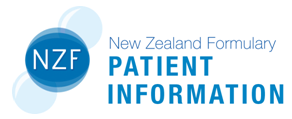What does it do?
Rivastigmine is used to treat symptoms of Alzheimer’s disease and dementia, such as confusion or memory loss.
Before you start
- Tell your doctor if you have heart or bladder problems, or if you have ever had a stomach ulcer.
- Tell your doctor if you are pregnant, planning to become pregnant, or breastfeeding.
- Your doctor may do a heart test (ECG) before you start and while you are taking rivastigmine.
How should you use it?
Use rivastigmine regularly as directed. Apply the patch to a clean, dry, hairless area of skin (such as the chest, back or upper arm). When you have removed the old patch, apply the new one in a different place to prevent irritating your skin. Do not cut the patch.
What if you forget a dose?
If you forget to change the patch, remove the old patch and apply a new one as soon as possible. Then apply your next patch at your normal time.
Can you take other medicines?
Tell your pharmacist or doctor about all medicines or treatments that you may be taking, including vitamins, herbal products or recreational drugs.
What side effects might you notice?
| Side Effects | Recommended action |
|---|---|
|
Coughing or vomiting of blood, vomit that looks like coffee grounds, red or black bowel motions Symptoms of a slow or irregular heartbeat including: feeling your heart skips a beat, dizziness or fainting |
Tell your doctor immediately |
|
Nausea, vomiting, diarrhoea, indigestion, change of appetite, weight loss Dizziness, tremor Low mood Red or itchy skin where patch has been applied |
Tell your doctor if troublesome |
If you notice any other effects, discuss them with your doctor or pharmacist.
Other information:
- Rivastigmine can impair your ability to do tasks such as driving or using machines. Alcohol makes this worse. Discuss your risk with your health professional. (search NZTA - Are you safe to drive?)
This leaflet contains important, but not all, information about this medicine.
Prepared by the MyMedicines Committee at Christchurch Hospital, Te Whatu Ora - Waitaha, New Zealand. March 2023
For more general information about this sheet and its contents, see: What does a My Medicines sheet cover?
Te Reo Māori
Te Reo Māori information sheets supported by Health Quality and Safety Commission New Zealand
Web links for this sheet in different formats
Click on buttons to copy web addresses for this leaflet:
If your browser does not automatically copy these links use its copy command instead.
About My Medicines
My Medicines Patient Information Leaflets (PILs) contain important, but not all, information about the medicines they describe.
For more information about the sheets, see: What does a My Medicines sheet cover?
My Medicines is developed by a team at Te Whatu Ora – Waitaha. Our team is made up of doctors, pharmacists, and a non-medical person to help us keep to plain language. We also discuss our information with specialist health professionals or groups when needed

